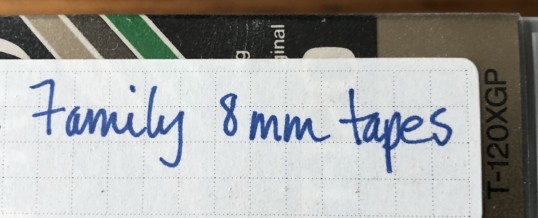
I find myself watching YouTube a lot. You can find just about anything on YouTube.
I’m especially drawn to things that aren’t mainstream. If I want to watch a drama, comedy, suspense movie, or the like, I can find that on Netflix or one of the networks.
But, YouTube is unique.
Anyone can have a YouTube channel. And lots of people do.
The quality of many of the videos is terrible. Some of the videos are great, but the audio is so bad you have to turn on the closed captioning option to understand what they’re saying.
Other videos are so well-produced that they could be shown on television. But, on YouTube, it really doesn’t matter. What matters is that anyone with a smartphone can make a video and get their message out – regardless of the production quality.
This is unprecedented in our country. Never before has what is happening in our world been documented so instantly, so constantly, and so thoroughly than it is today. And YouTube is the portal through which we can watch whatever we want to see, whenever we want to see it.
During my youth, video was expensive. About the best that any family could afford was a Kodak or Bell and Howell 8mm movie camera. The film had no audio and a camera could only record a few minutes of film. That footage then had to be sent off to be developed, which would often take weeks.
When it returned to your home, you dug out the 8mm projector, threaded the film, and hoped that the footage wasn’t blotted with too much sun or not enough light.
Home movies were a roll of the dice. Expensive and often not great quality.
Most folks bought one or two reels of 8mm film before a family reunion, birthday party, or trip to Six Flags or Disneyland.
One such excursion took place in 1964. Christian Nilsson’s grandparents, mom, and her siblings attended the 1964 World’s Fair, where his grandmother won a Kodak Fun Saver 8mm movie camera.
When his grandmother passed away in 2004, Nilsson found the movie camera at the bottom of a box. His grandfather told him that he didn’t recall his grandmother ever using it. He gave it to him.
The camera sat as decoration for 14 years until Nilsson actually opened the camera. Inside, he found undeveloped film.
His grandmother had used it. There was the proof.
Nilsson wanted to develop it, but there were two problems. One, film that’s sat for over half a century doesn’t hold up very well – especially if it hasn’t been in a climate-controlled place. Two, almost no one still develops 8mm movie film.
Nilsson’s YouTube video documents his journey to try and find a way to see what was on the undeveloped home movie film.
He discovered that some time ago, a group of students came up with a method called, “Caffenol.” The ingredients include coffee grounds, Drano, and Vitamin C.
I’m not making this up.
Nilsson contacted one of the people involved, who assured him that he could do it. But, rather than experiment on his grandmother’s home movie, he found a working 8mm camera, bought some film, shot some footage, and tried to develop it himself.
He attempted this in his kitchen sink. The results were not good.
Nilsson then found a place in Canada called Film Rescue International. They don’t develop film for just anyone, but they accepted his request for help.
Their results worked. Sort of. After years of the camera and the film sitting in an attic and then as decoration in Nilsson’s home, his grandmother’s footage did develop, although the quality was less than stellar.
But, it did work.
A slice of time came back. It awakened after sleeping in a camera for 54 years. He was able to show the home movie to his family.
There was his grandmother as a very young woman. His mother and her siblings were small children. And they were all smiling and laughing at the 1964 World’s Fair where his grandma had won the camera.
It took a lot of effort, but Christian Nilsson’s determination paid off. You can search YouTube for “I Found An Undeveloped Roll Of Film From 1964,” to watch his video.
His story made me remember all of my family’s 8mm home movies. Some 30 years ago, I secretly took them all to a camera shop in Texarkana and paid to have them transferred to VHS tape. I surprised my parents with this as a gift for Christmas.
My wife’s family had also transferred their home movies to VHS.
Unfortunately, that’s where all of our home movies still reside – on VHS tape.
Mr. Nilsson’s story made me realize that I need to transfer our home movies from VHS to digital.
There are companies that still do that.
And I need to make this happen. Before the only way it could be done is with coffee grounds, Drano, and Vitamin C in my kitchen sink.
©2019 John Moore
John’s book, Write of Passage: A Southerner’s View of Then and Now, is available on Amazon and Barnes and Noble.
Email John at John@TheCountryWriter.com.
MAR
2019
